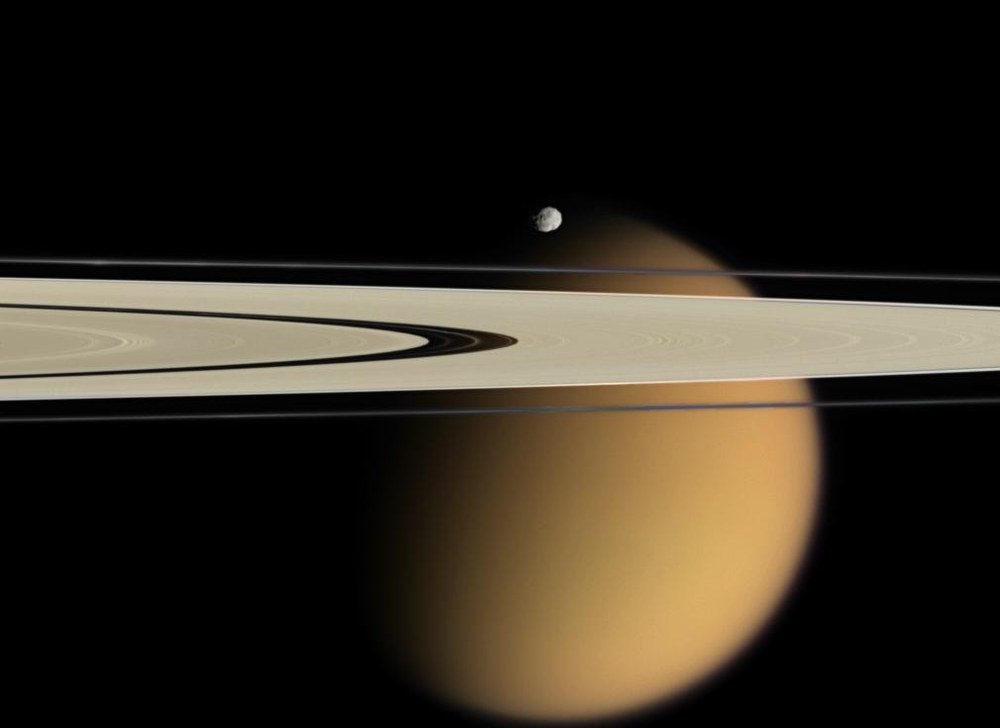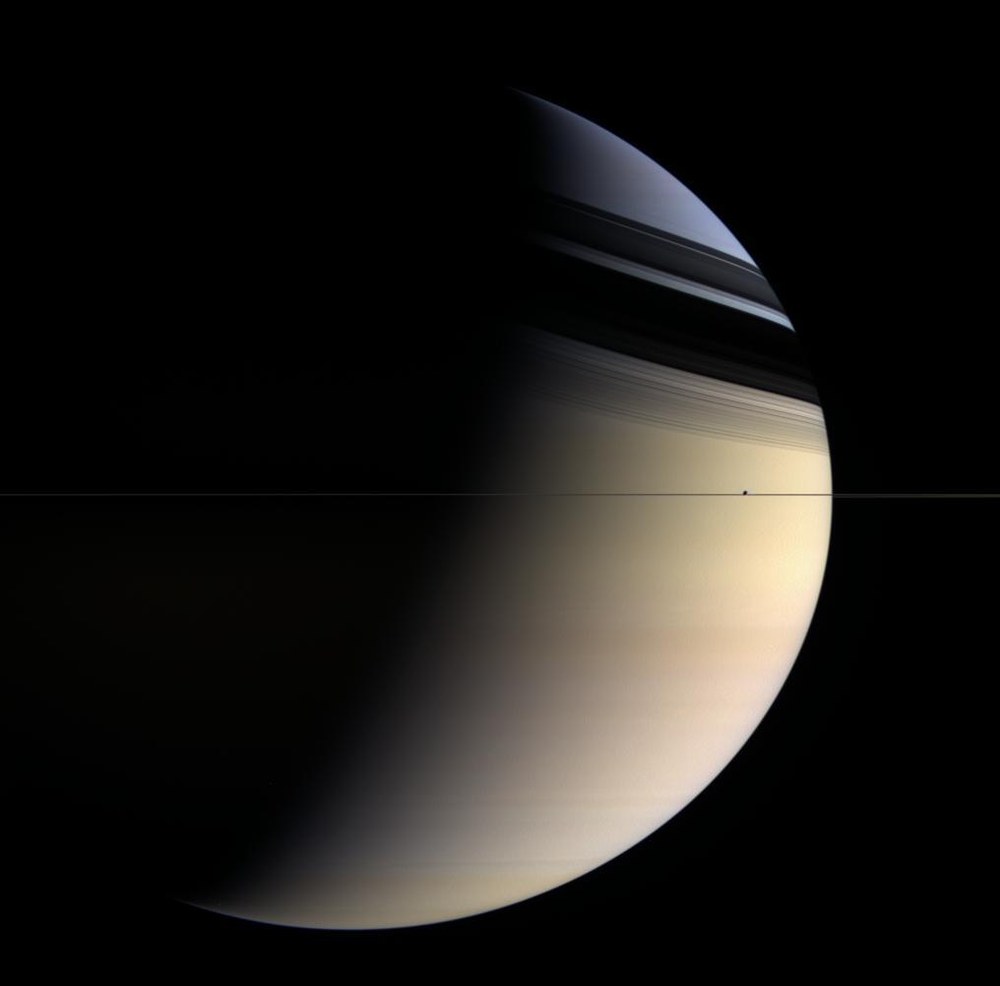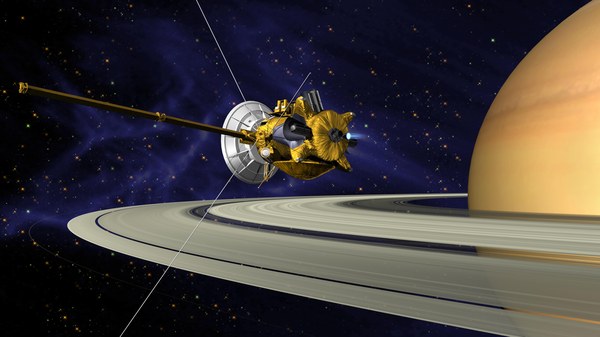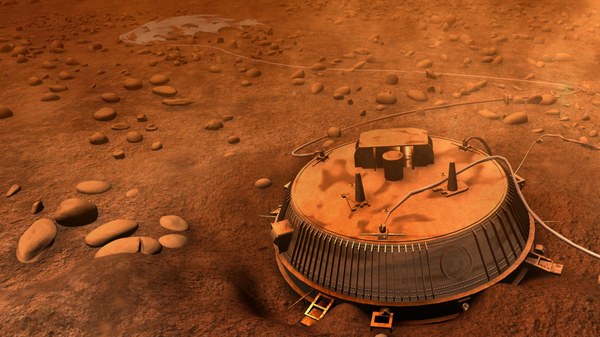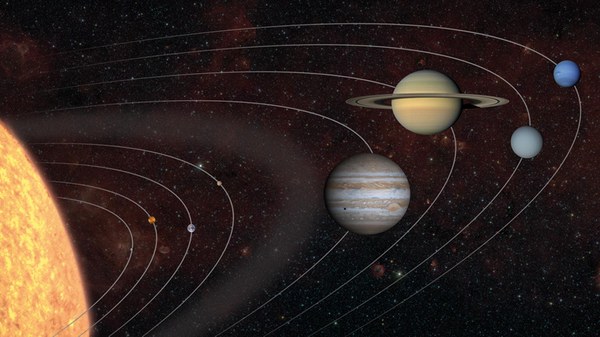Destination Saturn – The Cassini-Huygens mission
Mission data | |
|---|---|
Launch: | 15 October 1997 |
Launch weight: | 5,820 kilograms (including 365 kilograms payload) |
Fly-bys: | 2 x Venus, 1 each of Earth, Jupiter |
Cassini enters Saturn orbit: | 1 July 2004 |
Separation of Huygens probe: | 25 December 2004 |
Huygens landing on Titan: | 14 January 2005 |
Launch site: | NASA Kennedy Space Center, Cape Canaveral, Florida, USA |
Launch rocket: | Titan IV B/Centaur |
Mission Control Center: | NASA Jet Propulsion Laboratory (JPL), Pasadena, California, USA |
Ground stations: | NASA Deep Space Network |
Data reception: | No real-time operation; interim data storage in mass memory onboard Cassini with download during ground station contact periods |
Nominal mission end: | June 2008; extended until 2017 |
Cassini lifespan: | 4 years (approx. 76 Saturn orbits) |
Cassini spacecraft | |
|---|---|
CAPS (Cassini Plasma Spectrometer) | Research into plasma in Saturn's magnetic field with three spectrometers. Principal Investigator: David T. Young, Southwest Research Institute, San Antonio, Texas, USA. |
CDA (Cosmic Dust Analyzer) | Analyses ice and dust particles in the Saturnian system. The device can also identify the electric charge, speed, direction and mass of individual particles. It will also determine the chemical composition of such particles. The integrated High Rate Detector (HRD) can detect up to 10 000 particles per second. The CDA was developed at the Max Planck Institute for Particle Physics. Technology development, and production and benchmark testing for hardware and mechanical components, was completed under direction of the System Conditioning Department of the DLR Institute for Structural Mechanics in Berlin. Mission planning and data analysis are to be performed by the Max Planck Institute for Particle Physics. Principal Investigator: Ralf Srama, Max Planck Institute for Particle Physics, Heidelberg. |
CIRS (Composite Infrared Spectrometer) | Measures temperatures and compositions of surfaces, atmospheres and rings. It consists of three spectrometers, which measure in the wavelength ranges 7-9 microns, 9-17 microns and 17-1000 microns; the University of Wuppertal is involved in this instrument. Principal Investigator: Michael Flasar, NASA/Goddard Space Flight Center, Greenbelt, Maryland, USA. |
INMS (Ion and Neutral Mass Spectrometer) | Determines the composition of neutral and charged particles in the magnetosphere. Principal Investigator: J. Hunter Waite, SPRL, University of Michigan, Ann Arbor, Michigan, USA. |
ISS (Imaging Science Subsystem) | A remote sensing instrument that captures monochrome and colour images of atmospheres, rings and moons in the Saturnian system. ISS image data form the basis for most of the geological interpretations of the surfaces of the various moons, and for investigations into ring system dynamics and meteorlogical activity in the atmospheres of Saturn and Titan. The ISS camera consists of two components: the NAC (Narrow Angle Camera), with a focal distance from 2000 millimetres, and the WAC (Wide Angle Camera), featuring a focal length of 200 millimetres. The NAC obtains pictures having a spatial resolution of 60 metres per picture element (pixel) from a distance of 10 000 kilometres. A major focus of the DLR Institute of Planetary Research in Berlin lies in planning the point- and second-exact target sequences as well as cartographic treatment of the image data to produce geometrically accurate maps. This work has been conducted in cooperation with the Cassini Group of Professor Gerhard Neukum of the Free University of Berlin as well as the Space Science Institute in Boulder, Colorado, USA. Principal Investigator: Carolyn C. Porco, Space Science Institute, Boulder, Colorado, USA. |
MAG (Dual Technique Magnetometer) | Measures Saturn's magnetic field and its interaction with the solar wind. The University of Cologne and the Technical University of Braunschweig are active in relation to this instrument. Principal Investigator: David J. Southwood/Michelle Dougherty (acting), Imperial College, University of London, UK. |
MIMI (Magnetospheric Imaging Instrument) | Photography and measurement of Saturn's magnetic field through a set of three detectors. The Max Planck Institute for Solar System Research is involved in this instrument. Principal Investigator: Stamatios M. Krimigis, Johns Hopkins University, Laurel, Maryland, USA. |
RADAR (Cassini Radar) | Obtains radar images and height measurements of Titan's surface. Principal Investigator: Charles Elachi, Jet Propulsion Laboratory, Pasadena, California, USA. |
RPWS (Radio and Plasma Wave Science) | Investigation of planetary electrical and magnetic fields, electron densities and temperatures. Principal Investigator: Donald A. Gurnett, University of Iowa, Iowa City, Iowa, USA. |
RSS (Radio Science Subsystem) | Searches for gravitational waves in the Universe and examine the atmospheres, rings and gravitational fields of Saturn and its moons. Principal Investigator: Arvydas J. Kliore, Jet Propulsion Laboratory, Pasadena, California, USA. |
UVIS (Ultraviolet Imaging Spectrograph) | The UVIS consists of four individual components and can detect UV (ultraviolet) light in the 0.056- to 0.19-micrometre wavelength range. Scientists expect UVIS data to provide information on the composition of Saturn's rings and moons as well as on the composition, photochemistry and temperatures of the Saturn and Titan atmospheres. One of the four UVIS components, the Hydrogen-Deuterium Absorption Cell (HDAC), was developed and built at the Max Planck Institute for Solar System Research. This device will ascertain the relationship between hydrogen and deuterium (heavy hydrogen) in the Saturn and Titan atmospheres; the DLR Institute for Planetary Research participated in the development of software and will perform data evaluation for this device. Principal Investigator: Larry Esposito, University of Colorado, Boulder, Colorado, USA. |
VIMS (Visible and Infrared Mapping Spectrometer) | Conducts spectral mapping of the chemical composition and structure of the surfaces, atmospheres and rings of Saturn and its moons. VIMS receives signals both in visible light wavelengths (0.35 to 1.07 micrometres) and in infrared wavelengths (0.85 to 5.1 micrometres). The instrument consists of two spectrometers: one for visible light and the near infrared, the other for recording in the infrared spectrum. VIMS can obtain representations of the Saturnian ring and satellite surfaces, the Saturnian atmosphere and the atmosphere of Titan in 352 separate wavelengths within the above-mentioned spectral ranges; due to differing physical characteristics of surfaces and chemical substances, these can be recognized in the appropriate wavelengths. In addition, VIMS can look through Titan's thick cloud cover to 'see' the moon's surface . The spectral wavelength sensitivity of VIMS covers a large number of ice compounds such as water ice, dry ice, ammonia ice and methane ice. The spectrometer can also identify groups of minerals, such as silicates or oxides, and carbon, as well as other organic and inorganic materials on Saturnian moons. Dr. Ralf Jaumann from the DLR Institute for Planetary Research and his colleagues on the VIMS Science Team manage the calibration of the instrument, the planning of imaging sequences as well as the scientific evaluation of spectrometer data. Principal Investigator: Robert H. Brown, Lunar and Planetary Laboratory, University of Arizona, Tucson, Arizona, USA. |
Huygens Probe | |
|---|---|
HASI (Huygens Atmospheric Structure Instrument) | Examines the physical and electrical characteristics of the Titanian atmosphere during and after the landing by means of accelerometers, barometers and temperature sensors; the University of Cologne is involved in this instrument. Principal Investigator: Marcello Fulchignoni, Universite de Paris VII / Dept. de Recherche Spatiale, Observatoire de Paris-Meudon, France. |
DWE (Doppler Wind Experiment) | DWE examines the effect of winds on the probe with the help of an ultrastable carrier signal transmitted to the Cassini orbiter. Principal Investigator: Michael Bird, Universität Bonn. |
DISR (Descent Imager/Spectral Radiometer) | DISR conducts brightness and temperature measurements and obtains pictures of Titan's aerosol layer, atmosphere and surface. The Max Planck Institute for Planetary Research participates in the radiometer component. Principal Investigator: Marty Tomasko, University of Arizona, Tucson, Arizona, USA. |
GCMS (Gas Chromatograph Mass Spectrometer) | Determines the composition of the titanium atmosphere and aerosols by mass spectrometer, gas collection system, gas chromatograph and system for the transport of samples. Principal Investigator: Hasso Niemann, NASA/GSFC, MD, USA. |
ACP (Aerosol Collector and Pyrolyser) | Examines clouds and aerosols in Titan's atmosphere with the help of the GCMS (Gas Chromatograph Mass Spectrometer) Sample Collection System; the composition of Titan's atmosphere and aerosols is determined by means of a mass spectrometer, a gas collecting system, a gas chromatograph and a system for the transport of samples. Principal Investigator: Hasso Niemann, NASA/GSFC, Maryland, USA. |
SSP (Surface-Science Package) | Investigates Titan's surface properties in the immediate area of the probe's landing spot with seven subsystems, which measure local acceleration, inclination, temperature, acoustics, conductivity and density. Principal Investigator: John Zarnecki, Open University, Milton Keynes, UK. |




